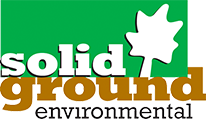
When considering the purchase or sale of a property, it’s essential to understand the potential environmental risks associated with the site. A Phase I Environmental Site Assessment (ESA) is a critical tool that can be used to identify and evaluate any potential issues related to contamination or hazardous materials on a given property.
This introduction will provide an overview of what a Phase I ESA entails, including regulatory requirements, identifying potential contamination sources, evaluating environmental risks, and reviewing data collected during the process. With this knowledge in hand, buyers and sellers alike can ensure they are informed about their property’s environmental status before moving forward with any transactions.
Definition of Phase I Environmental Site Assessment (ESA)
A Phase I Environmental Site Assessment (ESA) is an evaluation of a property’s environmental conditions, intended to identify any potential contamination sources or hazardous materials that could present a risk. The assessment must be conducted by a qualified environmental professional, who will review historical records and inspect the site for evidence of past contamination. The assessment also includes interviews with relevant parties and a review of local regulations.
After collecting all necessary data, the professional can then evaluate the potential risks associated with the property and provide recommendations based on their findings. By providing this information, Phase I ESAs help buyers and sellers make informed decisions when considering real estate transactions.
Overview of the Process
The Phase I ESA process begins with a thorough review of available records and documents related to the property’s history. This includes researching past land use, zoning, and regulatory information as well as conducting interviews with relevant parties. Then, the environmental professional will conduct an on-site inspection to look for physical evidence of contamination or hazardous materials. After collecting all necessary data, the professional can then evaluate the potential risks associated with the property and provide recommendations based on their findings.
The final report will include a comprehensive review of all findings and provide guidance for any necessary follow-up actions. Ultimately, Phase I ESAs help buyers and sellers make informed decisions when considering a commercial property or multi-family residential property.
Regulatory Requirements
The Phase I Environmental Site Assessment (ESA) is a critical step in the due diligence process when evaluating a potential property. Its purpose is to identify potential environmental liabilities associated with the acquisition or financing of a property.
The U.S. Environmental Protection Agency and state and local regulatory agencies recognize the Phase I ESA as an important tool for assessing risks related to potentially contaminated properties. To ensure that it meets their standards, regulators require that all such assessments be conducted by experienced professionals knowledgeable about regulations and guidelines in their jurisdiction. Furthermore, they must adhere to specific protocols and provide an unbiased opinion on the assessment findings. Ultimately, these requirements help buyers and lenders make informed decisions regarding their investments in contaminated properties.
Environmental Protection Agency (EPA) Requirements
The Environmental Protection Agency (EPA) has established a set of stringent requirements for Phase I Environmental Site Assessments (ESA). These assessments are conducted by experienced professionals to identify potential environmental liabilities associated with the acquisition or financing of a property.
The EPA requires that all such assessments adhere to specific protocols, be unbiased in its findings, and provide an opinion on the risks related to contaminated properties. These requirements are in place to help buyers and lenders make informed decisions regarding their investments in potentially contaminated properties. Furthermore, the guidelines ensure that all Phase I ESAs meet the standards set forth by regulators.
ASTM E1527-13 Standard Practice for Environmental Site Assessments: Phase I ESA Process
The American Society for Testing and Materials (ASTM) has established a set of standards for conducting Phase I Environmental Site Assessments (E1527-13). This process requires that an experienced professional inspect the property, assess the potential for contamination or environmental hazards, and provide an opinion on the risks associated with purchasing or financing a property.
The scope of the assessment includes examining historical uses of the site, interviewing local officials and occupants, reviewing past environmental assessments, and evaluating existing environmental conditions. Through this process, a Phase I ESA provides buyers and lenders with the information necessary to make informed decisions regarding their investments in potentially contaminated properties. Ultimately, ASTM E1527-13 ensures that all Phase I ESAs are conducted according to a rigorous set of standards which meet the requirements set forth by regulators.
Identifying Potential Contamination Sources
The identification of potential contamination sources is a critical component of any Phase I Environmental Site Assessment (ESA). During the assessment, an experienced professional will thoroughly inspect the property and evaluate the potential for contamination or environmental hazards. This includes examining the historical uses of the site, interviewing local officials and occupants, reviewing past environmental assessments, and evaluating existing environmental conditions. Additionally, records may be reviewed to identify possible sources of contamination such as previous owners, former tenants, adjacent properties, nearby industrial sites, and other facilities that could have caused contamination.
By taking these steps to identify potential sources of contamination during a Phase I ESA process, buyers and lenders can make more informed decisions.
Historical Use of the Property
During a Phase I Environmental Site Assessment (ESA), an experienced professional inspects the property and evaluates its historical use. This helps to determine if any of the past activities may have contributed to environmental contamination.
Examples of activities that can be examined include industrial operations, dry cleaning businesses, gas stations, manufacturing plants, landfills, mining operations and hazardous waste sites. Records are reviewed to identify previous owners, tenants, and adjacent properties. Local officials and occupants may also be interviewed for further information.
Underground Storage Tanks (USTs)
Underground Storage Tanks (USTs) can pose a significant environmental concern when it comes to Phase I Environmental Site Assessments.
USTs are tanks used for storing hazardous materials, such as petroleum and other chemicals, that are buried in the ground or partially submerged in a liquid. The risk associated with USTs is that they may leak and contaminate soil and groundwater.
During the Phase I ESA process, an experienced professional will inspect the property to determine if any USTs have been present on the site in the past. Local records and interviews with individuals who may have knowledge about any past UST presence can be used to help identify any potential risks associated with these tanks.
Hazardous Materials and Wastes
Hazardous materials and wastes can present significant risks during a Phase I Environmental Site Assessment. Hazardous materials are any substances that can cause harm to people, property or the environment if not managed properly. Examples include asbestos, lead-based paint, solvents, and other chemicals. Wastes can also be hazardous if they contain toxic compounds or pollutants.
During the Phase I ESA process, an experienced professional will inspect the property to determine if any hazardous materials or wastes have been present on site in the past. Local records and interviews with individuals who may be knowledgeable about any past presence of hazardous materials can be used to help identify any potential risks with the property.
Dry Cleaners, Gas Stations, and Other Industrial Properties
Industrial properties such as dry cleaners, gas stations, and other industrial facilities can present unique risks during a Phase I Environmental Site Assessment. These types of properties often contain hazardous chemicals and materials that may have been released into the environment. In addition, they may have underground storage tanks that could leak contaminants into soil and groundwater.
An experienced professional will inspect the property to identify any potential environmental hazards from these sources.
Researching Regulatory Records
Researching records from regulatory agencies is an important part of a Phase I Environmental Site Assessment (ESA). During this process, the assessor will review records from local, state, and federal regulatory agencies to identify any known environmental issues associated with the site. These records may include information on permits issued for activities such as hazardous waste disposal or handling, underground storage tanks, or other industrial processes. Additionally, the assessor may contact personnel at the regulatory agencies in order to verify that all necessary permits have been obtained and are up-to-date.
Why Are Phase 1 ESAs Important?
The Phase I Environmental Site Assessment (ESA) is an important puzzle piece in commercial real estate transactions. It’s a due diligence tool used to evaluate potential environmental liabilities associated with a property, ensuring that you’re fully aware of any present or historical issues that could affect it.
This report protects the landowner’s liability by identifying all past uses and their possible consequences on a property, such as using it for a gas station, dry cleaning business, or other industrial site. Some high-risk uses could affect the local environment for decades after businesses have vacated the premises, so its impact needs to be understood and studied in detail.
A well-prepared Phase I ESA is essential for this process because any unknown risk factors can come back to haunt the new owner later on. Ultimately, understanding the current environment and acting accordingly will save valuable time and money down the road.
Recommended Follow-up Actions After a Phase I ESA
At the conclusion of a Phase I ESA Report, we summarize our findings and make recommendations on how to proceed. These recommendations typically include any further testing or investigations that should be conducted in order to confirm the accuracy of the report or provide more detailed information about potential environmental liabilities. Additionally, the assessor may also recommend certain mitigation measures that can be taken to reduce risks associated with the property.
Ultimately, a Phase I ESA Report serves to inform buyers and lenders of potential environmental risks so they can make informed decisions about whether to purchase or finance a property.
An Environmental Consultant You Can Trust
If you’re looking for an expert environmental consultant, Solid Ground Environmental has you covered. We know the ins and outs of phase 1 ESAs and have meticulous attention to detail when carrying out an assessment on a property, whether you’re buying or selling. Contact us today to learn more about our nationwide environmental site assessment services.
